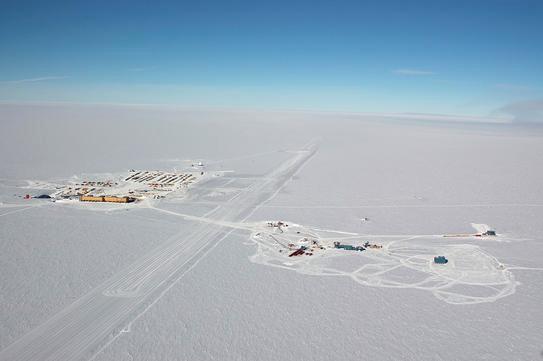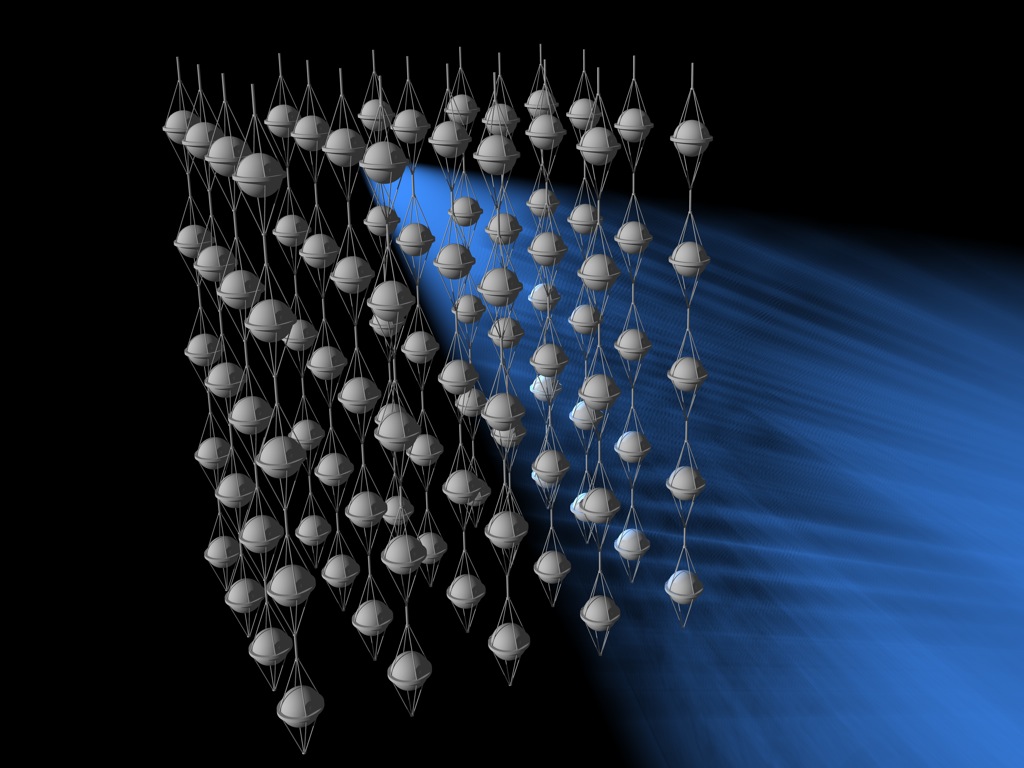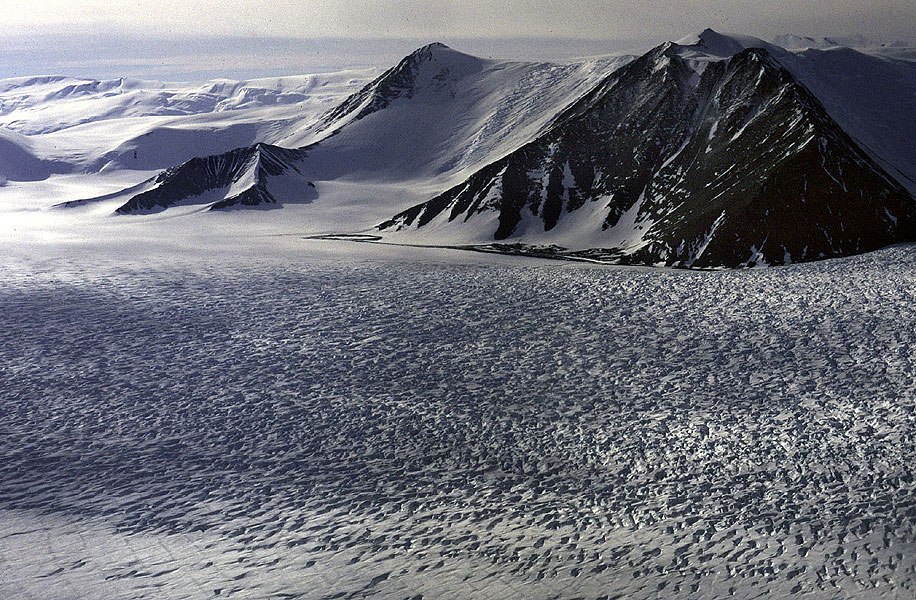 [Image: The IceCube's surface workings, Antarctica; via New Scientist].
[Image: The IceCube's surface workings, Antarctica; via New Scientist].Last week, New Scientist reported that a neutrino detector called IceCube, once constructed, might just do exactly that.
Because the Earth rotates, we read, distant neutrino sources – such as black holes – will be blocked at certain predictable moments by the Earth's core; piecing together all these temporary blindspots, we can then infer the shape of the core itself.
It's an absence that generates absences elsewhere.
 [Image: A schematic diagram of the IceCube].
[Image: A schematic diagram of the IceCube].The "machine" itself, meanwhile, is actually quite extraordinary: incredibly, it will "fill a cubic kilometre of ice" – and yet it's really a buried network of connected glass balls.
According to The Daily Galaxy, building the IceCube is less an act of construction than a kind of archaeology in reverse; the process will consist of entombing "glass-globed sensors the size of basketballs on 1-mile-long strings, 60 sensors per string, in 80 deep holes beneath the polar surface."
This will then allow scientists to develop, that same writer says, a "library of the universe" – something that would make even Borges proud.
So I'm left thinking of at least two things:
- 1) In John Carpenter's 1983 remake of The Thing, a team of Norwegian researchers finds something buried in the ice of Antarctica; it turns out to be a spaceship... which, according to a later group of American scientists, must have been there for more than 100,000 years.
It's frozen solid, and older than writing.
But what if, down there in the ice someday, we find something not unlike the IceCube – only we didn't put it there, some vast and buried machine with no identifiable purpose, origin, or design?
Or perhaps next year some lone helicopter pilot will go flying around, scanning the ice with radar, only to discover that what appears to be a geological formation is actually a machine, some ancient, hulking technology indistinguishable from bedrock... Or a machine made entirely from ice, still detecting the remnants of galaxies.
Perhaps even telescopes dream.
 [Image: A glimpse of the Transantarctic Range].
[Image: A glimpse of the Transantarctic Range].- 2) I was joking with a friend the other day that Americans are always stumbling upon the face of Christ in unexpected places, and then ending up on CNN. They find Christ on a pancake, or on a piece of burned toast, or on an Eggo waffle (these sightings often involve breakfast foods), or even in the bark of a tree – and the people who discover these faces never once seem to think that what they're suggesting is sacreligious: God has sent unto you his only son... disguised as a croissant.
But what if, after all the numbers are crunched and the maps are made, we find that the core of the Earth looks like the face of Jesus? What then? Nevadan entrepreneurs will suggest that we rescue it, digging it up with diamond drills, polishing it and storing it in a church somewhere.
Imagine the core of the planet on display behind stained glass inside a cathedral near Paris, or down in an old consecrated basement in central Rome. Under armed guard. Why is there not more holy geology?
Someone breaks in, using C4, a pair of infrared goggles, and a lot of rope, and they try to steal the center of the planet...
Then, if you're looking for a good book on Antarctica itself, consider picking up a copy of Terra Antarctica: Looking into the Emptiest Continent by William L. Fox (a book previously mentioned on BLDGBLOG here).
No comments:
Post a Comment